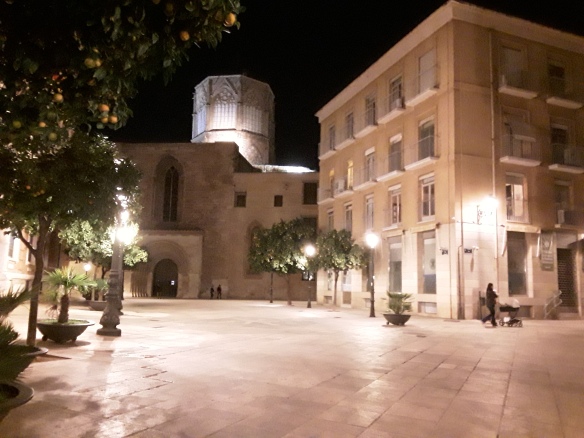I don’t feel qualified to assess the ins and outs, ups and downs and overall living prospects of this country because I barely know it. I don’t speak the language either. In my view, if a person doesn’t know the language of a country and has never lived there, then he or she is ill-equipped to judge or evaluate it in any in-depth way. (So I’m going to do it superficially, based on initial observations.)
Surprisingly, many Spaniards, young and old, don’t speak any other language than their own … even in the tourist office! And so I muddle along, in a fusion of French, English and Italian, and try to make myself understood. But it’s frustrating. I have never encountered this language barrier in Italy or Portugal … ever. The Spanish are known to be chauvinistic … of their culture, language, identity, etc. and believe they don’t need to learn another language. Fair enough. But if you work in the tourism-hospitality-service industry, it seems to me a good idea to learn a second language.
I make an effort to speak their language. But who knew that red wine was “vino tinto”? I had been ordering a glass of “vino rosso” (Italian) before learning that “rojo” is red in Spanish, but “tinto” is used for red wine.
Here are some random observations on my 7th day in the Valencia region of Spain:
Sunshine makes all the difference. The weather’s gorgeous here: today it’s 18°C and sunny. Many apartments have no heating. A/C is essential, heating optional.
Spaniards love their ham. In supermarkets, butchers and restaurants you see gigantic hind legs of pigs, hoof attached, and a man or woman cutting off thin slices to be eaten as tapas, in a sandwich or on a plate. Accompanied with a glass of wine (Rioja) and a salad, you’ve got yourself a delicious snack or meal.
Jamón – The Artisanal Ham Of Spain. Jamón is at the heart of Spanish culture and cuisine. While Spain’s regions vary in their local food traditions, cured Serrano and Ibérico hams are treasured from coast to coast, from the markets of Barcelona to the bars of Galicia and everywhere in between.
Exuberant, loud and happy – everything the French aren’t. The Spanish people I’ve met so far are helpful and friendly, despite the language barrier.
Feminine solidarity. As I walk around, I see large groups of older women out enjoying a meal or a drink together. You don’t see this in France; younger age groups, yes, but not women in their 50s and upwards.
Cost of living is definitely cheaper in Spain than in France. But the quality of life is just as good, even better on some levels. Marvelous, modern infrastructure (gleaming highways and fast-speed trains.) Clean! Low crime. I feel perfectly safe walking around at night.
Siesta takes getting used to, in fact, it baffles me. What do they do? Everything shuts down from 1 or 2 pm onwards then opens up again at 5. In between, the towns and cities are ghost towns.
Shop hours are dubious or completely unmarked. I must’ve gone to this roast chicken place at least four times to buy myself half a roast chicken (take-out.) But every time I showed up, the place was closed. I never did buy the damned chicken … and I’ve been hankering for some every since.
Fresh and delicious orange juice! The regional coastline is covered in orange groves and Valencia oranges are the sweetest. Spain is the biggest orange producer in Europe. In supermarkets there are machines that squeeze the oranges and the juice goes into a plastic bottle (small, medium or large) that you place under the spigot.

Loving and affectionate relations between parents and their (small) children. I see much intergenerational action: grandparents taking their grandkids to the park; parents, children and grandparents all going out together on a weekend outing. The elderly are not excluded, but valued members of society. Children appear to be cherished here, like in Italy. It’s nice to see.
Many Spaniards are kind and put themselves out for you. I walked into a restaurant, early, around 6:30 pm. People don’t eat until 8 or 9 pm here, later in the summer. They weren’t ready yet, but rushed around setting up a table for me and translating the menu the best they could in English. I ordered steak (entrecote) and a glass of Rioja. The meat was served to me seared and smoking, à la plancha, with grilled mushrooms, potatoes and eggplant on the side.
The chef came out of the kitchen. “¿Bueno?”
“Bueno“, I replied nodding, my mouth full of juicy tender steak. It was a simple meal – no bread, no condiments other than a small dish of sea salt … and darn good. So good I went back the next night and had the exact same meal.
Tomorrow – onwards to the third largest city in Spain after Madrid and Barcelona: Valencia, or rather, Valenthia (the “c” is pronounced “th”).













































